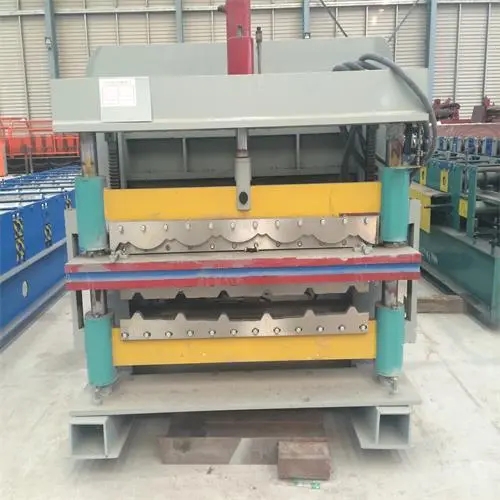The Grain Storage Roll Forming Machine Revolutionizing Agricultural Storage Solutions
In the agricultural sector, effective storage solutions are paramount to preserving the quality of harvested grains and maximizing shelf-life. One innovative technology that has emerged to meet this need is the grain storage roll forming machine. This advanced machine is designed to create robust and efficient storage structures that protect agricultural products from the elements, pests, and spoilage.
Understanding Roll Forming Technology
Roll forming is a process that involves the continuous bending of a long strip of metal into a desired cross-sectional profile. This process is accomplished through a series of rolls and dies, allowing for highly precise and efficient production of uniform shapes. When applied to grain storage, roll forming offers numerous benefits, including durability, cost-effectiveness, and rapid production rates.
The grain storage roll forming machine typically operates by feeding sheets of metal, often galvanized steel, into a series of rollers. These rollers shape the metal into panels designed specifically for building grain silos or storage bins. The resulting products are lightweight yet strong, making them ideal for agricultural environments where reinforced storage is necessary.
Benefits of Grain Storage Roll Forming Machines
1. Durability and Strength The galvanized steel used in roll forming is resistant to rust and corrosion, ensuring that the storage structures remain functional over time. This durability is crucial in agricultural settings where exposure to moisture and extreme weather conditions is common.
2. Customizable Designs Roll forming machines can be easily adjusted to produce various profiles and sizes. This adaptability allows farmers and storage facility operators to create storage structures tailored to their specific needs, whether they require small silos for local grains or large facilities for bulk storage.
3. Cost Efficiency By automating the production of steel panels, roll forming machines significantly reduce labor costs and production time. Additionally, the precision of the manufacturing process minimizes material waste, further lowering expenses.

4. Quick Assembly and Installation The pre-fabricated panels produced by these machines can be transported and assembled on-site, speeding up the construction process. This is particularly beneficial during peak harvest times when timely storage solutions are essential to prevent spoilage.
5. Energy Efficiency Modern roll forming machines are designed with energy efficiency in mind, requiring less power to operate compared to traditional manufacturing methods. This not only reduces costs but also aligns with increasing concerns about environmental sustainability.
The Role of Grain Storage in Agriculture
Effective grain storage is critical in ensuring food security. In many regions, inadequate storage can lead to significant losses due to spoilage and pest infestations. By utilizing advanced grain storage solutions, such as those produced by roll forming machines, the agricultural sector can enhance its capacity to store grains, stabilize prices, and improve overall supply chain efficiency.
Moreover, as global demand for food continues to rise, the need for efficient grain storage systems becomes even more pressing. Roll forming machines facilitate the construction of high-capacity storage facilities that can meet this growing demand while minimizing waste.
Conclusion
The grain storage roll forming machine represents a significant technological advancement in agricultural storage solutions. By offering customizable, durable, and cost-effective structures, this machine addresses essential challenges faced by farmers and storage operators. As the agricultural sector continues to evolve, the adoption of such innovative technologies will be crucial in maximizing the efficiency of grain storage and ultimately contributing to global food security.
Investing in grain storage roll forming machinery is not just a move towards modernizing agricultural practices; it is a step towards ensuring a more sustainable and secure food future. As we look ahead, embracing such innovations will be key to overcoming the challenges posed by population growth, climate change, and the ever-increasing demand for food.